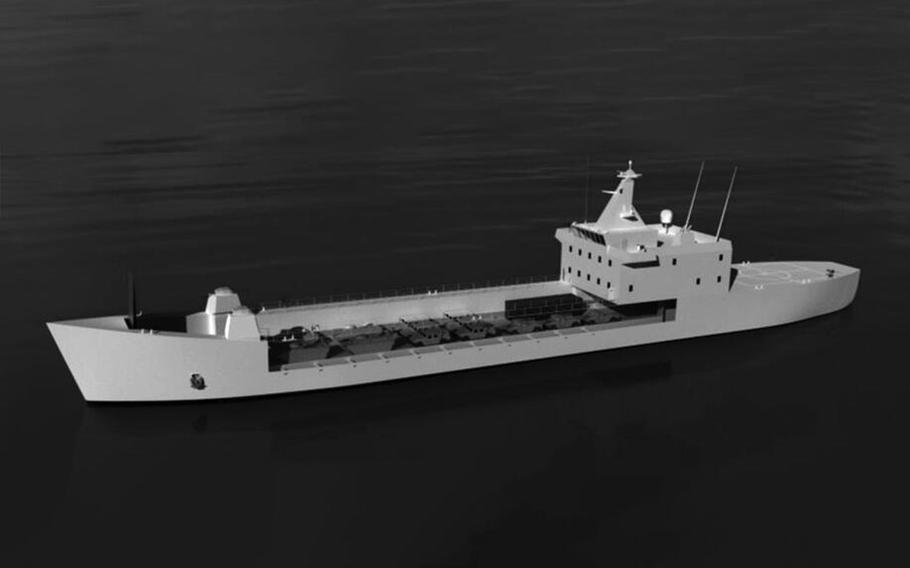
The Navy’s medium landing ship, or LSM, shown here in an artist’s rendering, is a key element of a U.S. Marine Corps plan to modernize the service. The 18-ship program may now exceed $6.2 billion in cost, according to a report by the Congressional Budget Office. (CBO)
An amphibious ship program critical to a U.S. Marine Corps plan to adapt the service for future warfare could cost billions more than expected, the Congressional Budget Office says.
Costs for the Navy’s medium landing ship, or LSM, could range from $6.2 billion to as much as $7.8 billion for 18 ships, the CBO said in a report released Thursday. Each ship could cost between $340 million and $430 million, depending on how the Navy configures and arms the vessels, the CBO said.
But the Navy says the ships, which would be used to deploy Marine units, will cost $179.1 million each, according to copy of the service’s 2025 long-range shipbuilding plan submitted to Congress in March and posted online by USNI News.
That would bring the cost of 18 ships to $3.2 billion, using figures from the report.
“Many facets of the program remain uncertain, such as the number of ships the Navy wants to buy as well as the design and capabilities of the ship,” the CBO said.
The agency noted that Navy and Marine Corps officials have called for as many as 35 ships.
“Equally uncertain is the overall cost of the program, because the Navy’s estimates have varied widely in its last three shipbuilding plans and budget submissions,” the CBO stated.
Proposed in 2020, the program consists of ships designed to carry small Marine Corps units armed with anti-ship or anti-air missiles, particularly in the western Pacific and in any potential conflict with China, according to the CBO.
With a length of 200 to 400 feet, and a crew of 70 sailors and the ability to support 50 embarked Marines, LSMs are smaller and less costly than other Navy amphibious assault and transport dock ships, the report said.
The ships are a key part of the Marine Corps’ Expeditionary Advanced Base Operations concept, and its Force Design 2030 program that, among other objectives, seeks to readily deploy smaller, agile forces.
The Navy plans to start building the ships in 2025.
Differing methods in determining costs and unclear program objectives, such as whether LSMs would be built to sustain combat conditions, may be some of the reasons for the disparity in the Navy and CBO cost estimates.
It’s not certain if the Navy and Marine Corps would use LSMs solely to deploy service members ahead of a conflict, or if the vessels also would be used to redeploy and resupply Marine units — an important factor in determining costs, the CBO said.
Ships built mostly to commercial standards would cost less and require fewer modifications such as stronger hulls, shock-hardened systems and more armament.
But if the LSMs were configured more like amphibious warships, the per ship cost could mushroom to as much as $600 million, according to the CBO report.
The Navy, in making its cost estimates over the last three years, specified it has “relied on commercial design standards, which do not have significant survivability and recoverability features,” the CBO report stated.
But the service has said while the LSM mostly would be built to commercial standards, it would have the survivability and recoverability features of an amphibious warfare ship.
In its analysis, the CBO considered a hybrid commercial-warship model of construction. It also used full-load weight displacements, or the amount of water displaced by a ship when it’s fully loaded, in determining costs, according to the report.
bath.alison@stripes.com @alisonbath_